文章
Gina
2017年03月15日
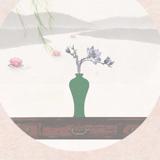

Few things bring more life to our home’s interiors than plants, and using tropical plants indoors creates your own little paradise. For us gardeners, it’s an opportunity to grow plants we might otherwise not be able to grow in our regions. Tropical plants are pretty easy to grow indoors, and just require attention to a few details to make sure they do well. Here are some popular tropical plants to grow indoors, and the little tricks to make sure you are successful with them. Remember if you have kids or pets to always check with your poison control to see if the plants you wish to use in your home are toxic.
Palms
There are many types of palms available as house plants, but most of them require the same basic care.
1. Palms generally like warm air. Keep palms away from cold drafts, air vents, or open doors.
2. Palms like to be moist, but most don’t like to sit in water. Make sure that you have a good drainage pan under your palm, and empty any excess about a half hour after watering. If you notice brown tips to the fronds, improve your drainage. Some palms like to be sprayed with a mister for humidity, and others, especially fan palms, prefer drier conditions. Check your specific type of palm.
3. Don’t overwater. This kills more palms than any other thing. Water when the soil is dry a half inch down.
4. Light, light, light! While palms will tolerate some low light, it’s not ideal and it will not help them grow into a healthy looking plant. Give them the brightest light you can provide. Palms with tender, transparent fronds will appreciate being shielded from direct sun.
Kentia Palm
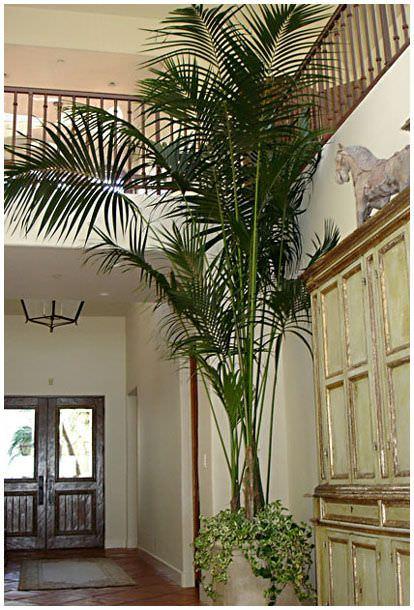
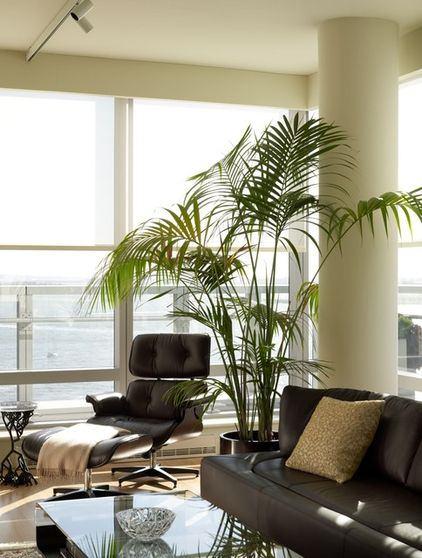
Bird of Paradise
Birds of Paradise (Giant or White) may be the most dramatic tropical plant you can grow indoors! Luckily, given the right conditions, they aren’t hard to grow. Here are the basics…
1. Light, light, light! Are you sensing a theme here? Bright light is the secret to this beautiful plant doing well.
2. Space. Repot every year and make sure they have growing room, because they grow quickly. The variety grown as a house plant can easily reach a height of 6 to 7 feet. After about 4 or 5 years, a Bird of Paradise (Strelitzia) may flower on rare occasions. The Strelizia Nicolai or White Bird of Paradise will produce a blue/white flower. Flower production is much more frequent when a Bird of Paradise is used as an outdoor plant.
3. Water. Keep this plant moist, as it does not like to dry out.
4. Fertilize regularly.
5. Don’t chill it out. This plant does not like to get below 60 degrees, and prefers it warm.
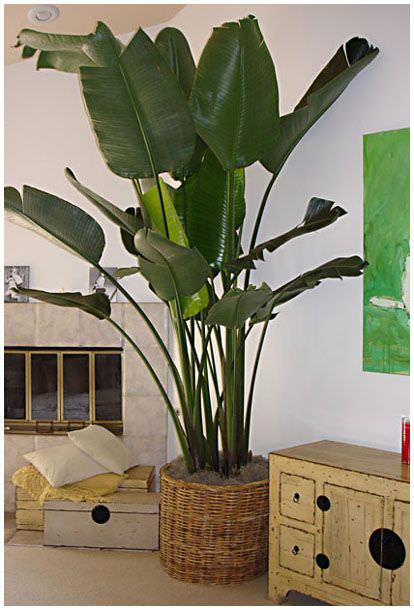
Philodendron (Split Leaf)
Another tropical and lush plant that can be grown indoors, the split leaf Philodendron can grow to a large plant both in height and circumference. Here’s how to grow it to it’s best.
1. Place in warm room without drafts, 5-10 feet away from a bright window. Trun a quarter turn every 4 or 5 days to keep the plant growing evenly.
2. Water when the soil is dry 1-2 inches below the surface. Water less often in winter, but never let it dry out to the point of wilting. Do not let it sit in water.
3. Mist with water every couple of days. Philodendron like high humidity.
4. Clean the leaves when necessary with a cloth dipped in warm water. Check for mites and flies often, and spray with an indoor spray if necessary.
5. Transplant every other year into a slightly larger pot.
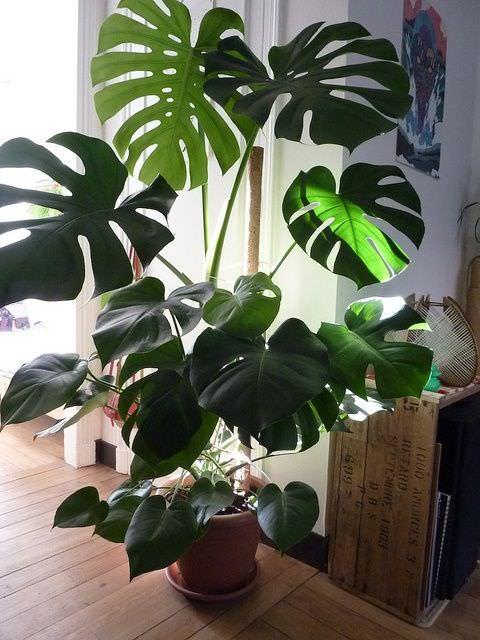
For those of you with a larger bathroom and a nice bright window, you have the perfect place for tropical plants to thrive!
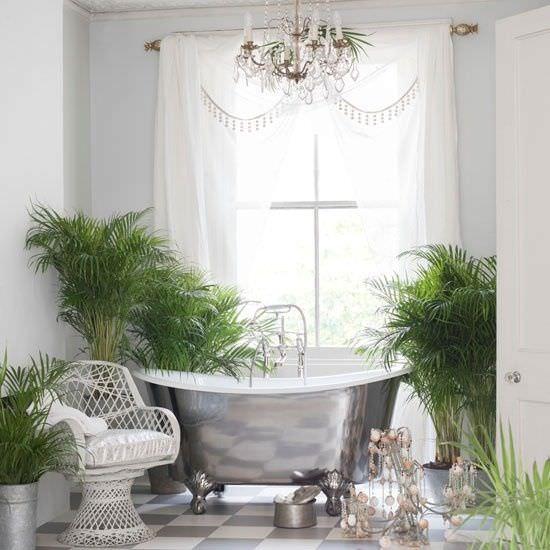
Tropical plants add a sense of luxury and drama to any home.

It’s not difficult to grow tropical plants indoors, and worth the little bit of extra effort for what they offer.
2
1
文章
Abigal
2017年03月13日

If you love chocolates grow chocolate scented flowers, check out this list of plants and flowers to get an idea.
If you love chocolate, chocolate scented flowers and plants are must have in your garden. Several plants and flowers that smell like chocolate or with their chocolate brown color can be a good addition to your chocolate garden. Plant these perennials/annuals in the garden or in containers on your patio, balcony or rooftop garden where you can enjoy the fragrance of chocolate issued by the pleasant wind.
1. Chocolate Daisy

It is also known as the chocolate flower (Berlandiera lyrata) due to its delicious chocolate like smell. It is a yellow-flowering perennial nectar plant that not only smells good to humans, but is also an allurement for bees, bumblebees, and butterflies.
2. Chocolate Cosmos

Chocolate cosmos adorn itself with amazing deep brown or chocolate colored flowers that emit a smell of rich chocolate. This perennial grows up to 30 inches tall in the full sun to partial shade position. It enjoys a rich, moist soil and is hardy warm temperates and subtropical climates under USDA zones 8 to 10. You can expect a chocolate scent to be the strongest in the early evening after a warm summer day. It is a drought-tolerant plant and easy to grow.
3. Black Salsify

As garden a plant, the Black salsify (Scorzonera hispanica) is too little known since most appreciate only the edible lower part of the plant, namely the root. Its dandelion-like large yellow blooms emanate a soft delicate odor reminiscent of chocolate. The fragrance is most intense in morning hours and from afternoon it subsides.
4. Carolina Allspice (Sweetshrub)

Carolina allspice is a shrub that doesn’t exceed the height of 2-3 m, you can also grow it in containers. This amazing plant is not only useful for its fragrant flowers that smell like chocolate but also for foliage that emit a cinnamon-like odor. It also produces an edible and delicious spice. Just snip off its twigs and allow them to dry out in the sun, then smash up the bark and use it like cinnamon.
5. Chocolate Mint

Grow chocolate mint in a container or on the ground to add a hint of minty chocolate odor to your garden and food. This perennial grows well in USDA zones 3 to 9b. Plant in partial sun but beware when you plant it directly on the ground as it can be invasive.
6. Chocolate Orchid

Sharry baby orchid is a sweet chocolate scented orchid. It is one plant that can bring the chocolate smell in your room. Place this plant in a well-lit spot away from intense direct sunlight that is high in humidity. Grow it indoors, on an east-facing window where it would receive soft morning sun would be perfect. Also, place the plant in a tray on pebbles filled with water to increase the humidity.
7. Chocolate Vine (Akebia Quinata)

This vigorous perennial vine is famous for its chocolate scented flowers. Its fruits are edible too. You can also grow it in pots. Its unusual flowers look amazing and blooms prolifically in full sun to partial shade.
If you love chocolate, chocolate scented flowers and plants are must have in your garden. Several plants and flowers that smell like chocolate or with their chocolate brown color can be a good addition to your chocolate garden. Plant these perennials/annuals in the garden or in containers on your patio, balcony or rooftop garden where you can enjoy the fragrance of chocolate issued by the pleasant wind.
1. Chocolate Daisy

It is also known as the chocolate flower (Berlandiera lyrata) due to its delicious chocolate like smell. It is a yellow-flowering perennial nectar plant that not only smells good to humans, but is also an allurement for bees, bumblebees, and butterflies.
2. Chocolate Cosmos

Chocolate cosmos adorn itself with amazing deep brown or chocolate colored flowers that emit a smell of rich chocolate. This perennial grows up to 30 inches tall in the full sun to partial shade position. It enjoys a rich, moist soil and is hardy warm temperates and subtropical climates under USDA zones 8 to 10. You can expect a chocolate scent to be the strongest in the early evening after a warm summer day. It is a drought-tolerant plant and easy to grow.
3. Black Salsify

As garden a plant, the Black salsify (Scorzonera hispanica) is too little known since most appreciate only the edible lower part of the plant, namely the root. Its dandelion-like large yellow blooms emanate a soft delicate odor reminiscent of chocolate. The fragrance is most intense in morning hours and from afternoon it subsides.
4. Carolina Allspice (Sweetshrub)

Carolina allspice is a shrub that doesn’t exceed the height of 2-3 m, you can also grow it in containers. This amazing plant is not only useful for its fragrant flowers that smell like chocolate but also for foliage that emit a cinnamon-like odor. It also produces an edible and delicious spice. Just snip off its twigs and allow them to dry out in the sun, then smash up the bark and use it like cinnamon.
5. Chocolate Mint

Grow chocolate mint in a container or on the ground to add a hint of minty chocolate odor to your garden and food. This perennial grows well in USDA zones 3 to 9b. Plant in partial sun but beware when you plant it directly on the ground as it can be invasive.
6. Chocolate Orchid

Sharry baby orchid is a sweet chocolate scented orchid. It is one plant that can bring the chocolate smell in your room. Place this plant in a well-lit spot away from intense direct sunlight that is high in humidity. Grow it indoors, on an east-facing window where it would receive soft morning sun would be perfect. Also, place the plant in a tray on pebbles filled with water to increase the humidity.
7. Chocolate Vine (Akebia Quinata)

This vigorous perennial vine is famous for its chocolate scented flowers. Its fruits are edible too. You can also grow it in pots. Its unusual flowers look amazing and blooms prolifically in full sun to partial shade.
0
1
成长记
Elena Galkina
2017年03月08日

Today I transplanted babies which were in the moss. Finally, there are only two baby plants, but they have very big and strong roots. Also I had no any problems with them, I just water them a lot and they were not too much waterlogged or aired. They always were just fine. I liked the way to grow baby plantes for saintpaulia in a moss


0
0
成长记
Elena Galkina
2017年03月08日

2 child plants are good and strong. Transplanted them. 2 are weak and sorted out




0
0
成长记
Elena Galkina
2017年03月08日

Weak splits are sorted out. In fact three of them are not so weak 😁, but there are a lot of plants and I dont need so much.
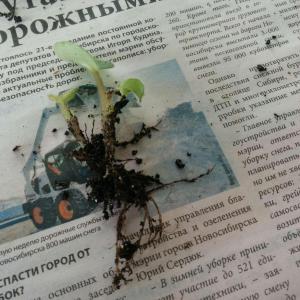



0
0
成长记
Elena Galkina
2017年03月08日

Today, I transplant splits. 4 baby plants are good. 3 are weak and I get rid of them
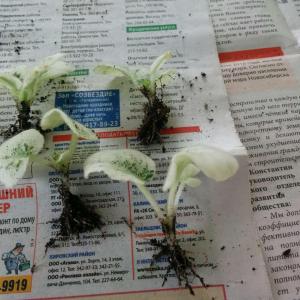
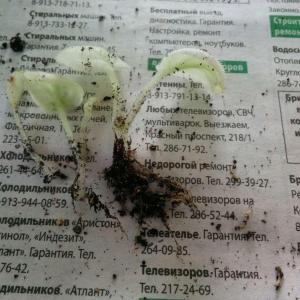


1
0
文章
Abigal
2017年02月23日

We all love a #garden path… whether winding or straight…neat as a pin, or overgrown with #plants , garden paths lead our eye through a garden, and add charm and focus as well. Every garden needs a good pathway. If you are not in need of an actual walkway through your garden, consider a path to lead to a focal point, around garden beds to make the yard look larger, or simply to nowhere in particular to add some structure and design elements. Here are five great #DIY garden paths you can do this weekend!

See our post – Stepables: Perfect Plants for Paths and Walkways
This path is a real money saver… it only uses a small amount of large stone for the focal point of the path, then fills with inexpensive gravel.

Here is a simple yet effective gravel garden path with instructions and tutorial via Sunset.com

Stone pavers can be cut into the lawn easily and creates a natural look for any yard. Lay each paver on the lawn in its place, then cut around the stone into the sod with a sharp knife. Remove the sod, then drop the stone into it’s place.


This pathway was created by Funky Junk Interiors from recycled pallets. See how they created their pallet walkway.

Simple and easy if you have access to a saw and tree logs!

This path has a more modern vibe, and is created with gravel and modern tiles with small ornamental grasses planted throughout.


See our post – Stepables: Perfect Plants for Paths and Walkways
This path is a real money saver… it only uses a small amount of large stone for the focal point of the path, then fills with inexpensive gravel.

Here is a simple yet effective gravel garden path with instructions and tutorial via Sunset.com

Stone pavers can be cut into the lawn easily and creates a natural look for any yard. Lay each paver on the lawn in its place, then cut around the stone into the sod with a sharp knife. Remove the sod, then drop the stone into it’s place.


This pathway was created by Funky Junk Interiors from recycled pallets. See how they created their pallet walkway.

Simple and easy if you have access to a saw and tree logs!

This path has a more modern vibe, and is created with gravel and modern tiles with small ornamental grasses planted throughout.

0
0
文章
Hande Salcan
2017年02月22日

Seed catalogs are out, (check our post on our seed catalog recommendations) and soon dedicated gardeners will be choosing what #plants to #grow this year from seed. We have some choices that make the experience a lot easier, with less frustration than you may have experienced if you have tried to grow plants from seed before. Choosing plants to grow from seed can be hit and miss, especially for the novice. Some plants are extremely difficult even under professional growing standards. However, luckily, there are many great #garden plants that are easy to start from seed, either indoors, or outside after the last frost. I am sticking to flowering plants for this one, as vegetables are a whole new subject…but just for the record, except for tomatoes, most common veggies are easy to grow from seed!

Annuals to Start from Seed
I am starting with the category of annuals. Annuals are plants that flower or fruit and then die in one season. They can be some of the easier plants to grow from seed. Many of them can be planted directly in the ground after the last hard frost, and don’t need an indoor seed starting set up. (Which really isn’t that hard, but does take some room. See our post on indoor seed starting.) You can find out the last frost date for your area by going to the National Climatic Data Center. Remember, these are just averages, watch your local conditions and forecasts. Here are our top annuals to grow from seed… all of these can be directly planted in the garden after frost, unless otherwise noted. However, for earlier blooms and fruit, you can start them indoors ahead of time. Sometimes I start them just a week or two early to give them a head-start, but I don’t have to create a lighting set up, and it takes up all that room for only a short time.
Cosmos – Tall flowering plant, with large daisy like blooms that go all summer. Great for cutting, don’t like to be transplanted so better direct sown. Full sun to partial shade. These look best used in broad swaths of color. They reseed readily, which I love. Purples, pinks and whites. Not very drought resistant, but not water greedy either. Do well in poor soil. Basically, you could toss out a handful of these, water in and wait! That easy!

Nasturtium – Great for spilling over containers. Yellow, orange and creams in a flowering plant, that is edible as well! Prefers some afternoon shade in hot climates. Some people like to soak the seed in water overnight, then direct plant in the ground, cover with a light layer of soil and water. Some great new varieties avaiable!

Sunflowers – I don’t even have to tell you how to plant a sunflower, but did you know that there are many, many different varieties? Dwarf or tall, bushy shrub like plants, or the more traditional stalk. Colors from bright yellow, to wine, to white. Large heads to dozens of tiny flowers. Pull out one of the garden seed catalogs we recommended, they all have great choices!

Annual Fountain Grass (Pennisetum) – Grow an ornamental grass to update your garden! This one has narrow leaves and grows about three feet tall and two wide. It may reseed. Sun.

California Poppy – Another one that is as easy as tossing onto some soil and watering in! Although I grew up in California and have fond memories of the bright orange blooms and ferny foliage along roadsides and highways early every summer, you might want to grow my favorite, California Poppy Rose. Pink in color, almost as easy to grow as the orange. Sun, drought resistant. Perfect for a cottage style garden.

Finally, who could leave out the old fashioned, but well loved Zinnia. Great for cutting, easy to grow from seed, pretty in the garden. Make sure you don’t water in the evening, as they can be prone to mildew. Keep cutting them and you will keep getting blooms! My fav is Zinnia Envy, a green variety that looks fantastic in any floral arrangement, and freshens the garden. Looks great with white.

Perennials to Start from Seed
Perennials are flowers that bloom and grow each season, only to go dormant in the winter and come back each spring. These usually bloom a little less than average the first year grown from seed. You can get a jump on the bloom by starting them indoors 6-8 weeks before the last frost. However, these picks can be direct sown outdoors as well, and enjoyed season after season. Have patience with them ,while they will reward you with blooms the first year, it will be year two and three that they fully come into their own. This can be the most economical way to start a garden, so have fun with this!
Yarrow – Easy to grow from seed, yarrow gives you broad heads of blooms all summer long. Yellow, pinks and red varieties are available. Drought resistant. Ferny foliage looks great in the garden. Cut back after flowering to encourage re-bloom. Make great dried flowers.

Coneflower – Coneflower has become the trend plant the last few years with dozens of new varieties appearing on the pages of the catalogs. Originally a wildflower of the prairie states, it is tough, disease resistant, easy to grow and gives you some gorgeous flowers heads, many of unusual shape to add to your garden form. My fav? Last year we grew Pow Wow Wildberry…love it!

Coreopsis – More daisy like flowers, but on compact plants… and they bloom their heads off! work great in containers as well. Yellows, pinks and bi-colored, great in a hot border.

Pinks (Dianthus) – Pinks are charming, low growing cottage style flowers, that blanket the ground with pink, red or white blooms. Easy to grow from seed, some varieties bloom all summer, others give you one spectacular bloom in late spring. Some are fragrant, and all are beautiful! Tough little plant, likes some afternoon shade and even watering.

Shasta Daisy – Big, gorgeous white flowers all summer. Can be direct sown outdoors after frost, but they need light to germinate, so just press into soil and water, don’t cover. Old fashioned favorite that is practically care free. Cut flowers back when they get ragged to keep it blooming all summer.

Those are our top picks for best plant to start from seed, so this year, get a plan going! And plant those seeds!

Annuals to Start from Seed
I am starting with the category of annuals. Annuals are plants that flower or fruit and then die in one season. They can be some of the easier plants to grow from seed. Many of them can be planted directly in the ground after the last hard frost, and don’t need an indoor seed starting set up. (Which really isn’t that hard, but does take some room. See our post on indoor seed starting.) You can find out the last frost date for your area by going to the National Climatic Data Center. Remember, these are just averages, watch your local conditions and forecasts. Here are our top annuals to grow from seed… all of these can be directly planted in the garden after frost, unless otherwise noted. However, for earlier blooms and fruit, you can start them indoors ahead of time. Sometimes I start them just a week or two early to give them a head-start, but I don’t have to create a lighting set up, and it takes up all that room for only a short time.
Cosmos – Tall flowering plant, with large daisy like blooms that go all summer. Great for cutting, don’t like to be transplanted so better direct sown. Full sun to partial shade. These look best used in broad swaths of color. They reseed readily, which I love. Purples, pinks and whites. Not very drought resistant, but not water greedy either. Do well in poor soil. Basically, you could toss out a handful of these, water in and wait! That easy!

Nasturtium – Great for spilling over containers. Yellow, orange and creams in a flowering plant, that is edible as well! Prefers some afternoon shade in hot climates. Some people like to soak the seed in water overnight, then direct plant in the ground, cover with a light layer of soil and water. Some great new varieties avaiable!

Sunflowers – I don’t even have to tell you how to plant a sunflower, but did you know that there are many, many different varieties? Dwarf or tall, bushy shrub like plants, or the more traditional stalk. Colors from bright yellow, to wine, to white. Large heads to dozens of tiny flowers. Pull out one of the garden seed catalogs we recommended, they all have great choices!

Annual Fountain Grass (Pennisetum) – Grow an ornamental grass to update your garden! This one has narrow leaves and grows about three feet tall and two wide. It may reseed. Sun.

California Poppy – Another one that is as easy as tossing onto some soil and watering in! Although I grew up in California and have fond memories of the bright orange blooms and ferny foliage along roadsides and highways early every summer, you might want to grow my favorite, California Poppy Rose. Pink in color, almost as easy to grow as the orange. Sun, drought resistant. Perfect for a cottage style garden.

Finally, who could leave out the old fashioned, but well loved Zinnia. Great for cutting, easy to grow from seed, pretty in the garden. Make sure you don’t water in the evening, as they can be prone to mildew. Keep cutting them and you will keep getting blooms! My fav is Zinnia Envy, a green variety that looks fantastic in any floral arrangement, and freshens the garden. Looks great with white.

Perennials to Start from Seed
Perennials are flowers that bloom and grow each season, only to go dormant in the winter and come back each spring. These usually bloom a little less than average the first year grown from seed. You can get a jump on the bloom by starting them indoors 6-8 weeks before the last frost. However, these picks can be direct sown outdoors as well, and enjoyed season after season. Have patience with them ,while they will reward you with blooms the first year, it will be year two and three that they fully come into their own. This can be the most economical way to start a garden, so have fun with this!
Yarrow – Easy to grow from seed, yarrow gives you broad heads of blooms all summer long. Yellow, pinks and red varieties are available. Drought resistant. Ferny foliage looks great in the garden. Cut back after flowering to encourage re-bloom. Make great dried flowers.

Coneflower – Coneflower has become the trend plant the last few years with dozens of new varieties appearing on the pages of the catalogs. Originally a wildflower of the prairie states, it is tough, disease resistant, easy to grow and gives you some gorgeous flowers heads, many of unusual shape to add to your garden form. My fav? Last year we grew Pow Wow Wildberry…love it!

Coreopsis – More daisy like flowers, but on compact plants… and they bloom their heads off! work great in containers as well. Yellows, pinks and bi-colored, great in a hot border.

Pinks (Dianthus) – Pinks are charming, low growing cottage style flowers, that blanket the ground with pink, red or white blooms. Easy to grow from seed, some varieties bloom all summer, others give you one spectacular bloom in late spring. Some are fragrant, and all are beautiful! Tough little plant, likes some afternoon shade and even watering.

Shasta Daisy – Big, gorgeous white flowers all summer. Can be direct sown outdoors after frost, but they need light to germinate, so just press into soil and water, don’t cover. Old fashioned favorite that is practically care free. Cut flowers back when they get ragged to keep it blooming all summer.

Those are our top picks for best plant to start from seed, so this year, get a plan going! And plant those seeds!
3
1
文章
Hande Salcan
2017年02月21日

Of all the plant pathogens, the ones you will deal with mostly are fungi. All plants are susceptible to attack from fungus. Most #fungi love wet conditions, and overwatering can produce such conditions.

If the soil your plant is rooted in does not drain well, and water stands too long at the base and around the roots, then your #plant is at risk of developing water mold root rot, a condition that is caused by a variety of fungi. The fungi start a rot that invades the roots and then works its way up the plant. This can be a quick or a slow process, depending on conditions. Often, after the rot is established, you will see dark discolorations in the plant’s roots and stems. This is where the infected plant tissue meets the healthy tissue.
The following is a list of potential problems and common symptoms caused by fungal diseases.
Damping-off: This disease can kill seedlings before they even break through the soil, but it also strikes seedlings just an inch or so tall.
Root Rot: This generally attacks older plants, killing the tiny rootlets and appearing above ground as stunting and wilting.
Club Root: This disease commonly infects cabbage family plants, causing large swellings on roots and or dead plants.
Blights: Includes early and late blight, which attack tomatoes and their relatives. The fungi can damage or kill leaves and cause rot in the fruit.
Mildews: This would include downy and powdery mildew. Infection results in spots or white patches on leaves, shoots, and other plant parts. Downy mildew can kill plants rapidly; powdery mildew commonly causes poor growth and lower yield, but seldom kills the plant.
Rusts: This disease will produce orange and white spots, usually on leaves and stems, weakening plants and reducing crop yields.
Leaf Spot: These symptoms are caused by a wide range of fungi.
How to Minimize Fungal Problems
Fungi spread by spore production, giving the disease the ability to travel great distances. The spores can be picked up by animals or water, including gardeners! One of the best ways to prevent fungal problems is to select plants that are resistant to the fungal diseases in your area.
After treating plants with fungal problems, rinse your gardening tools with alcohol or bleach, in case any spores remain, and destroy any diseased leaves rather than leaving them on the ground or placing them in your composting bin.
Organic Fungus-Killing Sprays

Instead of treating areas with chemical powders, you can use organic fungicides made straight from products in your kichen. Here is a list of some safe and easy to make sprays:
Basic Soda Spray
2 Tablespoons baking soda
1 gallon water
Add 1 teaspoon of vegetable oil (adds stickiness)
Mix all together and spray on problem areas.
Soda Spray for Rust
2 tablespoons baking soda
1 gallon water
6 tablespoons of vegetable oil
2 tablespoons kelp extract
Mix together and spray rust-covered areas.
Garlic is known to fight many types of disease-causing fungi, including mildew, mold, and rust. Garlic has not only shown that it can fight fungi but it also has some repellant qualities for other diseases and insects.
Basic Garlic Spray
1 garlic bulb
1 quart water
Crush the garlic and place in a pan of water, bring to a boil, then turn off heat. Let the mixture cool. Strain out the garlic.
Pour liquid into a spray bottle and spray the infected areas of the plant.
Vinegar Spray
Apple cider vinegar makes a great spray to combat many fungal diseases, including black spot on roses.
3 tablespoons apple cider vinegar
1 gallon water.
Mix together. Spray plants, being sure to do so in the morning so that the plant can dry out before evening.
Nothing spoils the look of a plant or shrub more than a fungus disease. Hopefully, by using some of the methods described in this article, you will be able to keep your plants looking healthy!

If the soil your plant is rooted in does not drain well, and water stands too long at the base and around the roots, then your #plant is at risk of developing water mold root rot, a condition that is caused by a variety of fungi. The fungi start a rot that invades the roots and then works its way up the plant. This can be a quick or a slow process, depending on conditions. Often, after the rot is established, you will see dark discolorations in the plant’s roots and stems. This is where the infected plant tissue meets the healthy tissue.
The following is a list of potential problems and common symptoms caused by fungal diseases.
Damping-off: This disease can kill seedlings before they even break through the soil, but it also strikes seedlings just an inch or so tall.
Root Rot: This generally attacks older plants, killing the tiny rootlets and appearing above ground as stunting and wilting.
Club Root: This disease commonly infects cabbage family plants, causing large swellings on roots and or dead plants.
Blights: Includes early and late blight, which attack tomatoes and their relatives. The fungi can damage or kill leaves and cause rot in the fruit.
Mildews: This would include downy and powdery mildew. Infection results in spots or white patches on leaves, shoots, and other plant parts. Downy mildew can kill plants rapidly; powdery mildew commonly causes poor growth and lower yield, but seldom kills the plant.
Rusts: This disease will produce orange and white spots, usually on leaves and stems, weakening plants and reducing crop yields.
Leaf Spot: These symptoms are caused by a wide range of fungi.
How to Minimize Fungal Problems
Fungi spread by spore production, giving the disease the ability to travel great distances. The spores can be picked up by animals or water, including gardeners! One of the best ways to prevent fungal problems is to select plants that are resistant to the fungal diseases in your area.
After treating plants with fungal problems, rinse your gardening tools with alcohol or bleach, in case any spores remain, and destroy any diseased leaves rather than leaving them on the ground or placing them in your composting bin.
Organic Fungus-Killing Sprays

Instead of treating areas with chemical powders, you can use organic fungicides made straight from products in your kichen. Here is a list of some safe and easy to make sprays:
Basic Soda Spray
2 Tablespoons baking soda
1 gallon water
Add 1 teaspoon of vegetable oil (adds stickiness)
Mix all together and spray on problem areas.
Soda Spray for Rust
2 tablespoons baking soda
1 gallon water
6 tablespoons of vegetable oil
2 tablespoons kelp extract
Mix together and spray rust-covered areas.
Garlic is known to fight many types of disease-causing fungi, including mildew, mold, and rust. Garlic has not only shown that it can fight fungi but it also has some repellant qualities for other diseases and insects.
Basic Garlic Spray
1 garlic bulb
1 quart water
Crush the garlic and place in a pan of water, bring to a boil, then turn off heat. Let the mixture cool. Strain out the garlic.
Pour liquid into a spray bottle and spray the infected areas of the plant.
Vinegar Spray
Apple cider vinegar makes a great spray to combat many fungal diseases, including black spot on roses.
3 tablespoons apple cider vinegar
1 gallon water.
Mix together. Spray plants, being sure to do so in the morning so that the plant can dry out before evening.
Nothing spoils the look of a plant or shrub more than a fungus disease. Hopefully, by using some of the methods described in this article, you will be able to keep your plants looking healthy!
1
0
文章
Joss
2017年02月20日

Enticing butterflies to your garden is fun and simple too. Butterflies are easy to attract to your garden if you plant a garden where the caterpillar (pupa step) has plants to eat and then the butterfly has flowers from which to sip nectar. Butterfly gardens are simple to plant and will provide you and your friends and family a chance to peek butterflies in their natural environment.
The basics are an open space with tons of sunshine and a location that is not windy. Choose a spot with lots of sunlight with a few rocks or stones that can warm up on which the butterflies will bask in the afternoon sun. Strive to locate your #garden close to hedges or shrubs that will aid in shielding them from the hardy winds. If it is too windy, the butterflies won’t stay around for any length of time. The hedge or shrub needs to develop food for the caterpillar. You can find out what the caterpillar likes best from your Nursery Garden Center.
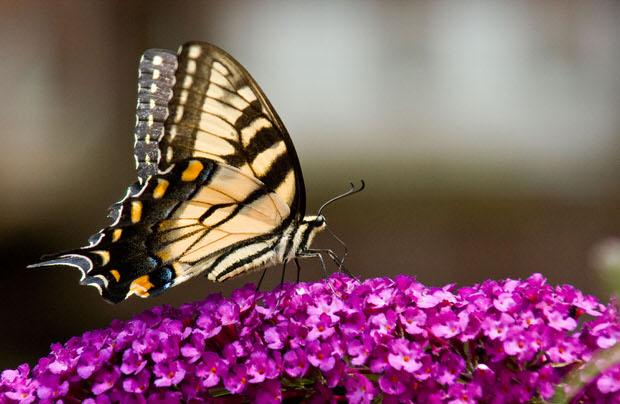
Butterflies relish mud puddles where they can drink the water and soak up minerals. A patch of moist soil will make them joyful. Most urgent of all is that the garden be pesticide free. Some gardeners like to utilize pesticides to chase away unwanted pests, unfortunately it will keep the butterflies from visiting your garden too. Plant your butterfly garden in a cranny where it will be free of chemical pesticides. Worthier still, ask your Garden Headquarters about organic gardening.
Flowers with nectar are a need for a butterfly garden. When planting these nectar sources try to put in plants that will provide nectar throughout the growing season since these are the origin of subsistence for the butterflies. Don’t discount shrubs and wildflowers. Roses, geraniums and lilies have no nectar so plant them somewhere else. Have your garden assorted to allure a the greater quantity of butterflies. Another ingredient for the butterfly garden is a source for larva food. The caterpillar needs food to develop into a butterfly. If there is no food present they will die. Plant some herbs for both of you. They love parsley, dill, and fennel for their meal. What herbs they don’t eat you can collect for home cooking with fresh herbs.
A butterfly garden can also be planted in containers. Purchase some elegant pots and plant them with flowers that retain a magnificent bouquet as well as vivid pretty colors (available at your Garden Center). Petunias, daylilies or sweet alyssum will do the trick. Of course the butterfly bushes are a given, or plant some hanging baskets with Impatients (shade will be necessary).
Some gardeners like to fashion there own feeder and solution. And it is easy to do. Put 4 parts water to 1 part sugar in a pot, bring it to a boil and cook it until the sugar dissolves. Bring it to room temperature. Use a container that is somewhat shallow, drench a paper towel with the solution and position it in the garden receptacle. Deposit a stone in the garden container so the butterflies have a seat to rest on while they are feeding.

This would be a great project for the kids. Have them maintain a diary of each of the various species that stop by your butterfly garden. Let them look up the butterflies on the computer to understand all about each special butterfly and it becomes not only enjoyable, but a learning experience besides.
Because there are so many growing zones in the United States you will want to speak with your Nursery Headquarters for suggestions of what plants to utilize for attracting butterflies in your individual zone.
There is an ancient American Indian Fable about butterflies:
“To have a dream come true you must seize a butterfly. Whisper to the butterfly what your request is and then set it free. This tiny messenger will carry your wish to the Great Spirit in the sky and it will become true.”
What a great folktale.
Happy Gardening!
The basics are an open space with tons of sunshine and a location that is not windy. Choose a spot with lots of sunlight with a few rocks or stones that can warm up on which the butterflies will bask in the afternoon sun. Strive to locate your #garden close to hedges or shrubs that will aid in shielding them from the hardy winds. If it is too windy, the butterflies won’t stay around for any length of time. The hedge or shrub needs to develop food for the caterpillar. You can find out what the caterpillar likes best from your Nursery Garden Center.

Butterflies relish mud puddles where they can drink the water and soak up minerals. A patch of moist soil will make them joyful. Most urgent of all is that the garden be pesticide free. Some gardeners like to utilize pesticides to chase away unwanted pests, unfortunately it will keep the butterflies from visiting your garden too. Plant your butterfly garden in a cranny where it will be free of chemical pesticides. Worthier still, ask your Garden Headquarters about organic gardening.
Flowers with nectar are a need for a butterfly garden. When planting these nectar sources try to put in plants that will provide nectar throughout the growing season since these are the origin of subsistence for the butterflies. Don’t discount shrubs and wildflowers. Roses, geraniums and lilies have no nectar so plant them somewhere else. Have your garden assorted to allure a the greater quantity of butterflies. Another ingredient for the butterfly garden is a source for larva food. The caterpillar needs food to develop into a butterfly. If there is no food present they will die. Plant some herbs for both of you. They love parsley, dill, and fennel for their meal. What herbs they don’t eat you can collect for home cooking with fresh herbs.
A butterfly garden can also be planted in containers. Purchase some elegant pots and plant them with flowers that retain a magnificent bouquet as well as vivid pretty colors (available at your Garden Center). Petunias, daylilies or sweet alyssum will do the trick. Of course the butterfly bushes are a given, or plant some hanging baskets with Impatients (shade will be necessary).
Some gardeners like to fashion there own feeder and solution. And it is easy to do. Put 4 parts water to 1 part sugar in a pot, bring it to a boil and cook it until the sugar dissolves. Bring it to room temperature. Use a container that is somewhat shallow, drench a paper towel with the solution and position it in the garden receptacle. Deposit a stone in the garden container so the butterflies have a seat to rest on while they are feeding.

This would be a great project for the kids. Have them maintain a diary of each of the various species that stop by your butterfly garden. Let them look up the butterflies on the computer to understand all about each special butterfly and it becomes not only enjoyable, but a learning experience besides.
Because there are so many growing zones in the United States you will want to speak with your Nursery Headquarters for suggestions of what plants to utilize for attracting butterflies in your individual zone.
There is an ancient American Indian Fable about butterflies:
“To have a dream come true you must seize a butterfly. Whisper to the butterfly what your request is and then set it free. This tiny messenger will carry your wish to the Great Spirit in the sky and it will become true.”
What a great folktale.
Happy Gardening!
1
0
文章
Joss
2017年02月20日

Few flower gardens would be complete without annual flowers. Their earliness and generosity of bloom will bring color and grace to any garden. Annual flower plants can be placed among perennials to fill in gaps in their bloom times, worked into bulb plantings, or just planted in a bed by themselves. Annuals are versatile, lovely, and colorful.

An annual plant is a plant which completes its entire life cycle in one growing season. The plant will germinate from seed, grow to maturity, flower, set seed and die in a span of a few months. Annuals generally will flower much more generously and over a longer period than perennial plants.
Annuals have been divided into three general hardiness classes, hardiness being how much cold weather, or frost they can endure and still live, grow, and bloom. The three classes are warm weather annuals, cool weather annuals, and frost hardy annuals.
Warm weather annuals will tolerate no frost at all. These are set out after the last frost date for the area in which they are to be grown. Warm weather annuals would include zinnias, marigolds, and nasturtiums.
Cool weather annual plants can tolerate some light frost and may be planted in the garden earlier. Indeed, some of these thrive in the cooler weather early in the season. These would include snapdragons, petunias, and calceolaria.

Frost hardy annuals can tolerate quite a bit of frost, indeed some, like the pansy, can be fall planted in a sheltered location and will over winter just fine. The pansy, if mild periods in winter occur, may even flower during the cold months of November, December, and March. In our southeastern Indiana garden I have had blooming pansies in January and February. Stock, calendula, and larkspur are also cold hardy annuals which can tolerate some frost.
An annual flower garden can be a very rewarding endeavor as annuals provide a bounty of color of a long period of time. Annual plants are quick to grow and bloom and will provide many months of bloom for your garden.

An annual plant is a plant which completes its entire life cycle in one growing season. The plant will germinate from seed, grow to maturity, flower, set seed and die in a span of a few months. Annuals generally will flower much more generously and over a longer period than perennial plants.
Annuals have been divided into three general hardiness classes, hardiness being how much cold weather, or frost they can endure and still live, grow, and bloom. The three classes are warm weather annuals, cool weather annuals, and frost hardy annuals.
Warm weather annuals will tolerate no frost at all. These are set out after the last frost date for the area in which they are to be grown. Warm weather annuals would include zinnias, marigolds, and nasturtiums.
Cool weather annual plants can tolerate some light frost and may be planted in the garden earlier. Indeed, some of these thrive in the cooler weather early in the season. These would include snapdragons, petunias, and calceolaria.

Frost hardy annuals can tolerate quite a bit of frost, indeed some, like the pansy, can be fall planted in a sheltered location and will over winter just fine. The pansy, if mild periods in winter occur, may even flower during the cold months of November, December, and March. In our southeastern Indiana garden I have had blooming pansies in January and February. Stock, calendula, and larkspur are also cold hardy annuals which can tolerate some frost.
An annual flower garden can be a very rewarding endeavor as annuals provide a bounty of color of a long period of time. Annual plants are quick to grow and bloom and will provide many months of bloom for your garden.
2
0
文章
Joss
2017年02月20日

A big pot of red zonal geraniums is an eye-popping spot of color. Two pots next to the mailbox is a friendly welcome! These versatile plants are ideal for window boxes, hanging baskets, wheelbarrows, plumbing fixtures, you name it. They are also excellent performers in memorial boxes.
It seems that 45 percent of all geraniums sold are red (and there are hundreds of shades of red). After that, 30 percent are salmon, 15 percent pink, and 10 percent white. That doesn’t leave out the gorgeous lavenders and yellows that are available.

And, have you seen the ivy variety? They have funky saw-toothed leaves and sweet, fuzzy flowers with all the hardy features of the regular kind.
Here are a few “frequently asked questions” on geraniums and their care.
Why are they called “zonal” geraniums?
During cooler weather, red rings often appear on the leaves. These are referred to as “zones” and add a bright touch to the foliage.
Is it better to grow geraniums from #seed or to buy started plants?
Cutting-grown plants are healthier and hardier, and start to bloom sooner than those grown from seed. They stay truer to the mother’s variety, too, so there are fewer variations in flower color and quality. Always buy started plants from a reputable grower and you will experience great success.
Should I pinch or deadhead my geraniums?
You absolutely should pinch and deadhead your geraniums. Pinching promotes bushiness, and deadheading encourages new growth for new blooms. Pinch off approximately 1 inch of the stem (or more for leggy plants) once they’re established in their new homes. When blooms start to fade and shed petals, pinch flower stems close to the branch. It should re-bloom in a few days.

How often do I need to water?
Geraniums like moist soil so check often and water thoroughly when they’re dry. They can take being too wet or too dry for a while, but they don’t like it! When you water, pour the water into the pot underneath the bottom leaves, rather than pouring it over the top. Your blooms will last longer and be prettier.
Should I feed my geraniums?
You bet you should feed geraniums. Water with a solution of MiracleGro or other standard fertilizer once a week. Follow the label directions to get just the right amount.
Why do the bottom leaves turn yellow?
You’re either under- or over-watering. Check the soil and the pot. Make sure it’s draining properly. Geraniums are full-sun plants, but they should not dry out during the hot days of summer. Just pinch off the yellow leaves and keep a close eye on your plants, and you’ll be fine.

Can I keep my geraniums over the winter?
You can try. When the weather cools off down to mid- to high forties at night, repot in fresh potting mix, give them a dose of fertilizer, and set them in a sunny, southern-exposure window. (They probably won’t make it through the winter without a southern exposure.) Water when dry, and drop back on fertilizer, only feeding every few weeks. Keep your fingers crossed, and try not to be too disappointed if they give up in January.
Above all, enjoy your geraniums. You’re carrying on a long tradition by growing these beautiful plants.
It seems that 45 percent of all geraniums sold are red (and there are hundreds of shades of red). After that, 30 percent are salmon, 15 percent pink, and 10 percent white. That doesn’t leave out the gorgeous lavenders and yellows that are available.

And, have you seen the ivy variety? They have funky saw-toothed leaves and sweet, fuzzy flowers with all the hardy features of the regular kind.
Here are a few “frequently asked questions” on geraniums and their care.
Why are they called “zonal” geraniums?
During cooler weather, red rings often appear on the leaves. These are referred to as “zones” and add a bright touch to the foliage.
Is it better to grow geraniums from #seed or to buy started plants?
Cutting-grown plants are healthier and hardier, and start to bloom sooner than those grown from seed. They stay truer to the mother’s variety, too, so there are fewer variations in flower color and quality. Always buy started plants from a reputable grower and you will experience great success.
Should I pinch or deadhead my geraniums?
You absolutely should pinch and deadhead your geraniums. Pinching promotes bushiness, and deadheading encourages new growth for new blooms. Pinch off approximately 1 inch of the stem (or more for leggy plants) once they’re established in their new homes. When blooms start to fade and shed petals, pinch flower stems close to the branch. It should re-bloom in a few days.

How often do I need to water?
Geraniums like moist soil so check often and water thoroughly when they’re dry. They can take being too wet or too dry for a while, but they don’t like it! When you water, pour the water into the pot underneath the bottom leaves, rather than pouring it over the top. Your blooms will last longer and be prettier.
Should I feed my geraniums?
You bet you should feed geraniums. Water with a solution of MiracleGro or other standard fertilizer once a week. Follow the label directions to get just the right amount.
Why do the bottom leaves turn yellow?
You’re either under- or over-watering. Check the soil and the pot. Make sure it’s draining properly. Geraniums are full-sun plants, but they should not dry out during the hot days of summer. Just pinch off the yellow leaves and keep a close eye on your plants, and you’ll be fine.

Can I keep my geraniums over the winter?
You can try. When the weather cools off down to mid- to high forties at night, repot in fresh potting mix, give them a dose of fertilizer, and set them in a sunny, southern-exposure window. (They probably won’t make it through the winter without a southern exposure.) Water when dry, and drop back on fertilizer, only feeding every few weeks. Keep your fingers crossed, and try not to be too disappointed if they give up in January.
Above all, enjoy your geraniums. You’re carrying on a long tradition by growing these beautiful plants.
0
0
文章
Joss
2017年02月20日

The crocus delights us in early spring as it dares to peek through the snow and lift its face to the sun. Soon after follow tulips, narcissus, iris, lilacs… all perennials that welcome spring with vibrant color and fragrance. Perennial plants bloom at different times during the growing season and delight you with variety in color and size from earliest spring to late autumn. However, many perennials like those mentioned, bloom only for a few short weeks and then disappear from the landscape until the following year.

Annual #plants provide a garden with continuous bloom and color throughout the summer. The “mission” of an annual is to produce seed. Seeds sprout, foliage grows, flowers bloom and then the plant goes to seed. When the annual completes its mission, the entire plant – flower, foliage, and root system, dies.
Some annuals have a very short life span and depending upon when they are planted, may reseed and go through two or more growing cycles per season. Other annual plants grow continuously from spring planting until the first frost of autumn.
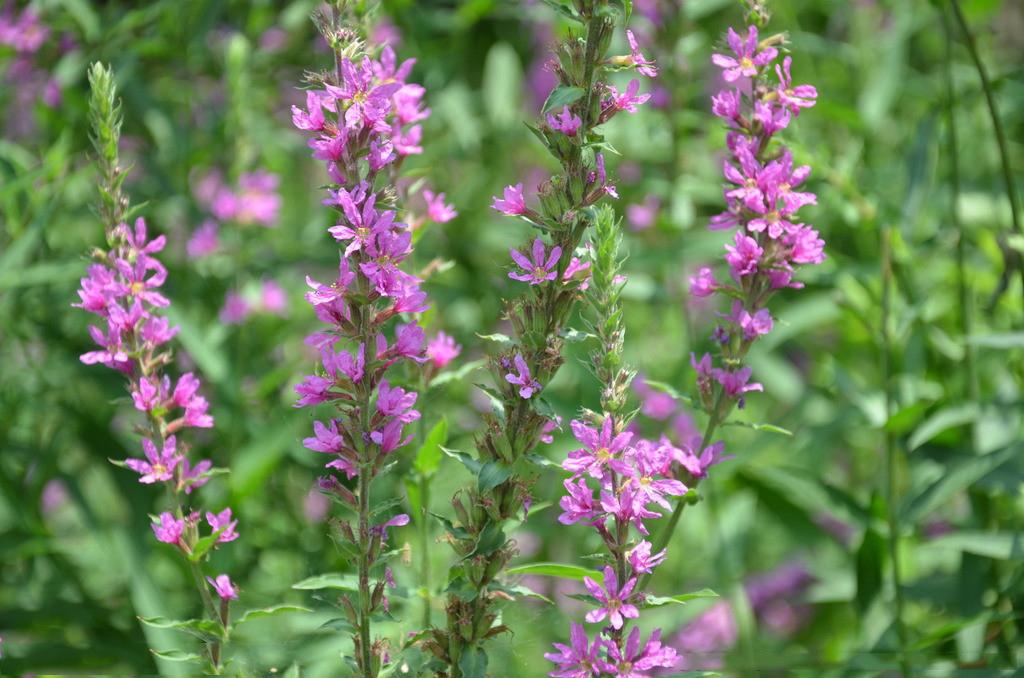
Since annual plants die completely at season end, they need to be replaced yearly. Depending on the cultivar, annual seeds can be planted directly into a garden or sprouted indoors for transplanting when weather conditions and soil temperatures are right for growth.
Annual transplants are also available each spring at gardening centers and many are sold in inexpensive flats that contain four or more plants. Annual plants can often be closely grouped to fill in barren areas of your landscape whereas perennials often need space to multiply and/or to grow to maturity.
Although some perennial plants are more expensive to purchase than annuals, in the long run you may find them less expensive since they last for longer than a single growing season. You can also purchase groups of assorted perennial bulbs in very inexpensive packs.
Perennial foliage and flowers also die at the end of a growing season, but contrary to annuals, the root systems of perennial plants live over winter and resprout with new growth each spring.

Another advantage of perennial plants is that although flowers and foliage die back, the branches of perennial shrubs offer some visual appeal to a winter landscape.
Perennial plants may take more than one season to reach full maturity. Because perennials propagate from root structures, many types of perennials also need to be divided after three or four seasons to reduce crowding and maintain their vigor.
Although all perennial plants are able to resprout for multiple seasons, perennials are divided into to categories of hardy perennials or tender perennials according to the temperature zone in which they are grown.
Hardy perennials are those that can be left in the ground to return the following season. Except for occasional division and/or pruning, hardy perennial plants need little care once established.
Bulbs like tulips and daffodils are among the easiest plants to grow and excellent choices for a beginning gardener. Tender perennials need your help to survive the winter. Some can over winter when covered with a layer of mulch or otherwise protected from the elements with gardening appurtenances such as rose cones. Some tender perennials need to be lifted and stored indoors over winter.
So the question remains, do you need annual plants or perennials? Each type of plant is ripe with “pros” and short on “cons” if you love flowers. The best solution is to experiment by planting some of each to get a summer full of color, variety, and pure gardening enjoyment!

Annual #plants provide a garden with continuous bloom and color throughout the summer. The “mission” of an annual is to produce seed. Seeds sprout, foliage grows, flowers bloom and then the plant goes to seed. When the annual completes its mission, the entire plant – flower, foliage, and root system, dies.
Some annuals have a very short life span and depending upon when they are planted, may reseed and go through two or more growing cycles per season. Other annual plants grow continuously from spring planting until the first frost of autumn.

Since annual plants die completely at season end, they need to be replaced yearly. Depending on the cultivar, annual seeds can be planted directly into a garden or sprouted indoors for transplanting when weather conditions and soil temperatures are right for growth.
Annual transplants are also available each spring at gardening centers and many are sold in inexpensive flats that contain four or more plants. Annual plants can often be closely grouped to fill in barren areas of your landscape whereas perennials often need space to multiply and/or to grow to maturity.
Although some perennial plants are more expensive to purchase than annuals, in the long run you may find them less expensive since they last for longer than a single growing season. You can also purchase groups of assorted perennial bulbs in very inexpensive packs.
Perennial foliage and flowers also die at the end of a growing season, but contrary to annuals, the root systems of perennial plants live over winter and resprout with new growth each spring.

Another advantage of perennial plants is that although flowers and foliage die back, the branches of perennial shrubs offer some visual appeal to a winter landscape.
Perennial plants may take more than one season to reach full maturity. Because perennials propagate from root structures, many types of perennials also need to be divided after three or four seasons to reduce crowding and maintain their vigor.
Although all perennial plants are able to resprout for multiple seasons, perennials are divided into to categories of hardy perennials or tender perennials according to the temperature zone in which they are grown.
Hardy perennials are those that can be left in the ground to return the following season. Except for occasional division and/or pruning, hardy perennial plants need little care once established.
Bulbs like tulips and daffodils are among the easiest plants to grow and excellent choices for a beginning gardener. Tender perennials need your help to survive the winter. Some can over winter when covered with a layer of mulch or otherwise protected from the elements with gardening appurtenances such as rose cones. Some tender perennials need to be lifted and stored indoors over winter.
So the question remains, do you need annual plants or perennials? Each type of plant is ripe with “pros” and short on “cons” if you love flowers. The best solution is to experiment by planting some of each to get a summer full of color, variety, and pure gardening enjoyment!
1
0
文章
Joss
2017年02月20日

#Blue flowers are some of the most striking plants around and can add a rich splash of color to any garden. Plant them in a cluster of all blue or mix them in with other flowers for a rainbow of color.
When planting flowers, it is important to remember to follow the instructions on the tag for the plant. Always buy plants that will thrive in the conditions in which you intend to grow them. A plant that loves sun will not do well in a shady area and you will only be disappointed with the results.
When planning your garden, be aware of the bloom time of the flowers. Planting perennials with different bloom times near each other will insure a garden that has blooms all season long. Remember also to plan for the height of the plants, putting the taller ones in the back.

Consider the flowers on the list below for your garden.
Polemonuim aka Blue Pearl – A compact plant with deep sky blue flowers that grows to 10″. It blooms in late spring to early summer. Plant in partial shade and in well drained soil.
Blue Sea Holly – This dramatic plant has a lavender blue cone like flower with long spiked petals. It grows to 30″ and is a favorite for dried flower arrangements. Plant in full sun – blooms in mid to late summer.
#Delphinium aka Butterfly Blue – Bright blue delicate flowers adorn a plant that blooms in early to mid summer. It reaches 10″ tall and prefers a sunny location with rich moist soil.
#Campanula aka Blue Carpet – Bright blue to lilac colored flowers bloom for weeks in the middle of summer. This low growing perennial grows to 4″ and prefers full sun with well-drained soil.
#Penstemon aka Blue Buckle – This plant has tubular shaped blooms in blue to purple and flowers in mid summer to early fall. It grows to 15″ and likes well-drained soil with full or partial sun.

#Hydrangea aka Nikko Blue – Gigantic clumps of blue flowers adorn this shrub for most of the summer. In the fall, the flowers turn a golden color. This plant is a new variety that prefers rich soil but will grow in shade, partial sun, or full sun.
#Vinca – Medium blue flowers and glossy green leaves form a carpet that grows to about 6″ tall and blooms in mid spring. This plant will grow in most soil conditions, in the shade or sun.
#Ajuga aka Bronze Beauty – This short bushy plant has spikes of blue flowers that grows quickly. Great as a ground cover or in raised beds. It blooms in spring and prefers a shady area.
#Scabiosa aka Butterfly Blue – A bushy perennial with lavender blue flowers that bloom from June to October. This plant likes full sun and attracts butterflies and hummingbirds.
Verbena aka Babylon Blue – Blue purple flowers petals adorn a plant that blooms in early spring. Great for window boxes and planters.
When planting flowers, it is important to remember to follow the instructions on the tag for the plant. Always buy plants that will thrive in the conditions in which you intend to grow them. A plant that loves sun will not do well in a shady area and you will only be disappointed with the results.
When planning your garden, be aware of the bloom time of the flowers. Planting perennials with different bloom times near each other will insure a garden that has blooms all season long. Remember also to plan for the height of the plants, putting the taller ones in the back.

Consider the flowers on the list below for your garden.
Polemonuim aka Blue Pearl – A compact plant with deep sky blue flowers that grows to 10″. It blooms in late spring to early summer. Plant in partial shade and in well drained soil.
Blue Sea Holly – This dramatic plant has a lavender blue cone like flower with long spiked petals. It grows to 30″ and is a favorite for dried flower arrangements. Plant in full sun – blooms in mid to late summer.
#Delphinium aka Butterfly Blue – Bright blue delicate flowers adorn a plant that blooms in early to mid summer. It reaches 10″ tall and prefers a sunny location with rich moist soil.
#Campanula aka Blue Carpet – Bright blue to lilac colored flowers bloom for weeks in the middle of summer. This low growing perennial grows to 4″ and prefers full sun with well-drained soil.
#Penstemon aka Blue Buckle – This plant has tubular shaped blooms in blue to purple and flowers in mid summer to early fall. It grows to 15″ and likes well-drained soil with full or partial sun.

#Hydrangea aka Nikko Blue – Gigantic clumps of blue flowers adorn this shrub for most of the summer. In the fall, the flowers turn a golden color. This plant is a new variety that prefers rich soil but will grow in shade, partial sun, or full sun.
#Vinca – Medium blue flowers and glossy green leaves form a carpet that grows to about 6″ tall and blooms in mid spring. This plant will grow in most soil conditions, in the shade or sun.
#Ajuga aka Bronze Beauty – This short bushy plant has spikes of blue flowers that grows quickly. Great as a ground cover or in raised beds. It blooms in spring and prefers a shady area.
#Scabiosa aka Butterfly Blue – A bushy perennial with lavender blue flowers that bloom from June to October. This plant likes full sun and attracts butterflies and hummingbirds.
Verbena aka Babylon Blue – Blue purple flowers petals adorn a plant that blooms in early spring. Great for window boxes and planters.
1
0
文章
Hande Salcan
2017年02月18日


All too often, soil composition is neglected. Every season, our plants and gardens rob the #soil of it nutrients. All gardeners are to be custodians of the soil, taking the time to replace food and other elements as they are used. Since our soil is so important, we need to treat it, as we want to be treated, not like dirt.
Soil is a composition of weather-beaten rock, minerals, decayed plant materials and other organic ingredients. All this takes a long time to develop, but can be damaged by our action or neglect in a single season.
For soil to be healthy, it should contain a balanced mix of air, water, nutrients, and organic matter. There are a couple things we can do to protect this mixture.
Adding organic matter on a regular basis is probably one of the most important things we can do. Adding compost and animal manure can do many things, for instance:
Increases the soil’s capability to hold nutrients.
Makes food available to plants over a longer period of time.
Lessens the amount of nutrients lost by erosion or leaching.
Provides micronutrients that are needed by plants in small amounts.
Releases nutrients already in the soil by increasing the action of beneficial microorganisms.
Increases the water-holding capacity for sandy soils.
Increases the drainage of clay soils.
Saves money.

Do not apply fertilizer to #lawns until we get a good soaking rain, and for best, safest, long-lasting results use organic fertilizers. The wet soil puts the nutrients into a solution and helps distribute the nutrients to the plant roots to be absorbed.
The ability of soil to drain water is important. However, when you read phrases like “plant in a well-drained soil” or “does not like wet feet”, they are talking about the plant’s need for air. The roots of plants require oxygen and any soil that is waterlogged will be lacking oxygen.
Many plants will put up with high moisture-conditions during the growing season, but when the plants are dormant, the same conditions may kill them. By improving the drainage, the plant will have a better growing environment.
Another problem is soil becoming compacted by tractors and other equipment or just by tilling it year after year. You will find soil compaction in most soils, from gardens to farm fields.
Tilling the soil when it is too wet will clump and ruin the composition of the soil. This condition takes a long period of time to bring it back to health. To tell if the soil is too wet take a handful and squeeze it, if it crumbles in your hand then it is ready to till but if it clumps then it is too wet. Some people now believe that tilling at all is not good for the structure of the soil. It exposes the helpful microorganisms to the environment and they are destroyed.

However, gardeners may wonder if it is best to till the garden in the fall or spring. Tilling the soil in the fall has advantages over springtime. When spring arrives, it allows for earlier planting since the basic soil preparation is done. Tilling in the fall allows a large amount of organic matter to be turned into the soil and start decomposing because the microbes are active currently.
An excellent source of organic matter is the fall leaves. Try tilling a thick layer of leaves into the soil this fall and by spring, it will have decomposed.
Sowing a cover crop, like winter rye, is very beneficial by adding valuable nutrients and organic matter when tilled into the soil the following spring. Fall tilling will disrupt the bad insects, diseases, and weeds, reducing their population.
Fall is a good time to test your soil and should be done every couple of years. In conclusion, doing all the previous steps should be done the organic gardening way. It is back to basics when it comes to gardening.
1
0




